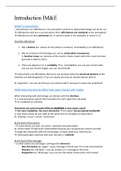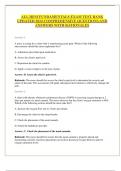Samenvatting
Samenvatting interactive media & entertainment
- Instelling
- Universiteit Gent (UGent)
Samenvatting van de lessen interactive media & entertainment. Had 16/20 door enkel deze samenvatting te lezen. Hij is beknopt maar alle uitleg staat er in.
[Meer zien]





